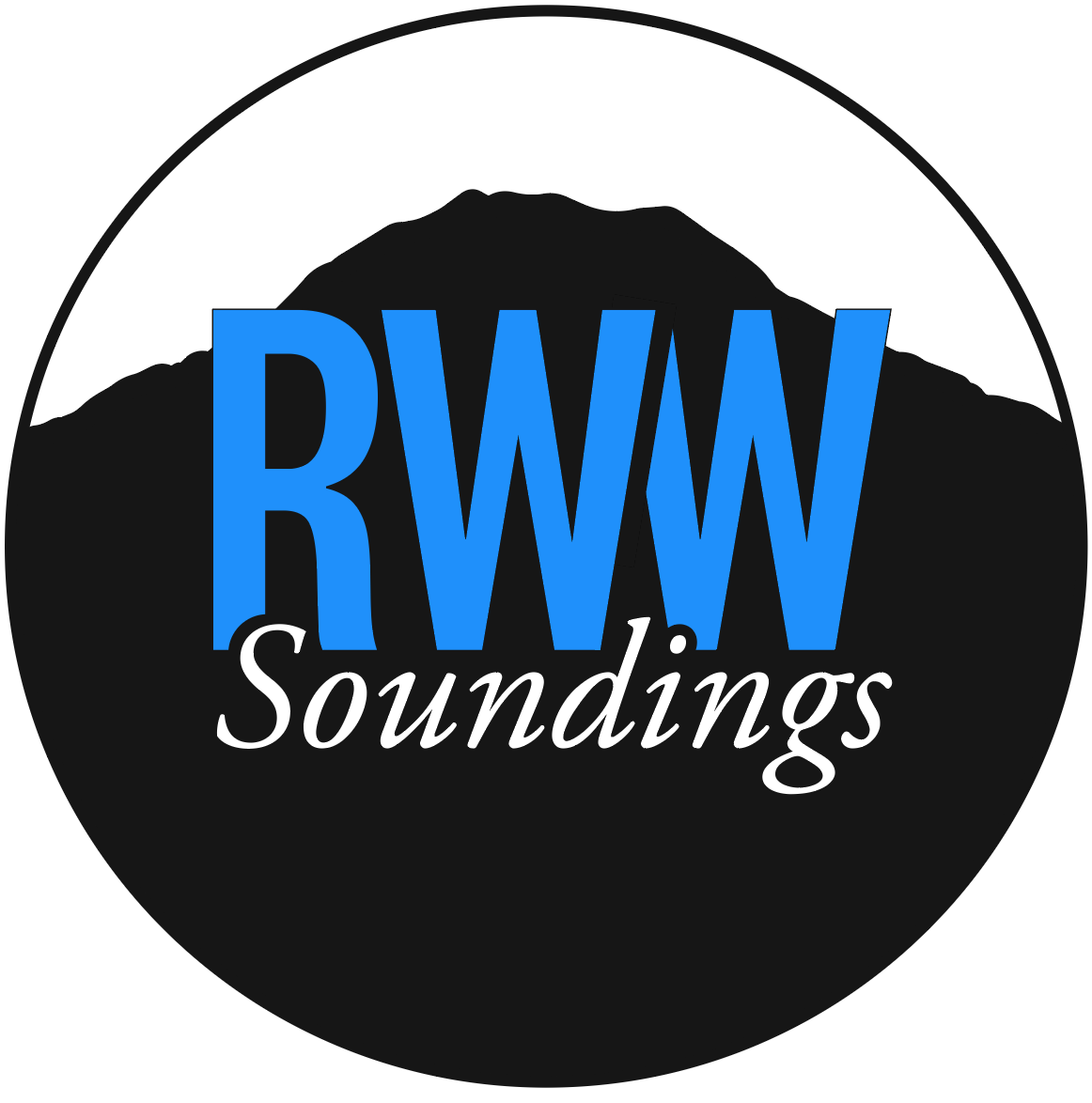Fall 2022
2
Breaking the Silence:
New Pedagogies for Workshop
RWW Faculty
Breaking the Silence:
New Pedagogies for Workshop
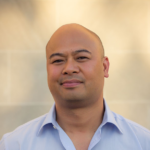
Oliver de la Paz
RWW Faculty
Introducing the “Breaking the Silence” Panel
Our group of writers came together because we all employ new and novel approaches to the workshop. Additionally, our pedagogical methods are in conversation with a larger discussion in the creative writing field at this moment. The recent publications of Matthew Salesses’s Craft in the Real World, Felicia Rose Chavez’s The Anti-Racist Writing Workshop: How to Decolonize the Creative Classroom, and Liz Lerman’s foundational Critical Response Process are all texts that are part of a new scrutiny of the approach to creative teaching. Much of this new scrutiny comes about because of a renewed critique of past approaches in light of a diversifying student body.
This movement, though, first begins as a response to tradition. The Iowa Writers’ Workshop is one of the first higher-education institutions to provide creative writers a degree for their writing. The Workshop, which was founded in 1936, gained its broadest popularity after World War II under the helm of Paul Engle. Part of what made the institution popular is that it, like the program at Stanford, catered to veterans who used their GI Bills to pay for their education. The spirit of these programs was to create a style that was distinctly and morally American in the face of a culture war against the “red menace” of communism. As part of the program, the writers were subjected to a stylized pedagogical approach which eventually became known as the “Iowa Method.”
The “Iowa Method” became a type of creative writing pedagogical style that was pervasively normalized throughout many higher education creative writing programs. The method is very simple:
- A writer distributes their work to the rest of the group ahead of the meeting.
- Each member reads the work on their own, away from other group members.
- Members of the workshop write a critical response to the work that’s usually a single-spaced page in length.
- Readers will mark up the manuscript as well.
- When the group meets, the author sits quietly for twenty to thirty minutes or more as members of the workshop critique the work.
- The writer is forbidden to speak during this time.
The part that many writers have taken issue with is the embargo on the writer’s ability to contextualize/speak about their work while other participants of the workshop, many of whom have their own agendas, discuss the work.
For our panel, we explore alternatives to the “Iowa Method,” by first critiquing the method’s power dynamics, which are not suitable for a broad swath of today’s workshop population. We also critique the way that the “Iowa Method” centers the product of the work versus the process of creating the work. And finally, we examine how the “Iowa Method” fosters a sense of competition versus collaboration—writers are pitted against their peers as they sit in silence and listen to feedback.
Our panelists first discuss Liz Lerman’s Critical Response Process, which is a foundational text for new approaches in the workshop. We then talk about the work of Matthew Salesses and his book, Craft in the Real World. We look into writing communities like Cave Canem, Canto Mundo, and Kundiman, which grant writers of difference permission to continue their craft, and then we examine new and novel approaches to the workshop through collaboration and other forms of creation.
Oliver de la Paz's sixth book of poetry, The Diaspora Sonnets, is forthcoming from Liveright Press, an imprint of W.W. Norton, in 2023. A founding member, Oliver serves as the co-chair of the Kundiman advisory board. He has received grants from the NEA, NYFA, the Artist’s Trust, the Massachusetts Cultural Council, and has been awarded two Pushcart Prizes. His work has been published in journals such as Poetry, American Poetry Review, Tin House, The Southern Review, and Poetry Northwest. He teaches at the College of the Holy Cross and in the Low-Residency MFA Program at PLU.
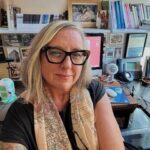
Barrie Jean Borich
RWW Faculty
Seeing Ourselves in the Conversation: A Pedagogical Antidote to the Lonely Workshop
As we move more deeply into a time when many of our traditions and systems are under review, it should be no surprise that creative writers find ourselves reaching for alternatives to the longstanding Iowa Writing Workshop Model. I’m grateful for this discussion, which I have been waiting for my whole career.
My own workshop pedagogies have long diverged from the “Iowa Method,” and I have been continuously revising my own workshops for over 20 years. I use, instead, a variation of dancer and choreographer Liz Lerman’s Critical Response Process, a format recently re-popularized in the loose community of artist-educators seeking new approaches to workshop.
Liz Lerman, who describes herself as a nonfiction choreographer and maker of “docudances,” developed her critical response model sometime around 1994 (she is not herself certain of the date) because she felt that critiques in her discipline had devolved into being more about the critiquer than the work critiqued. As I tell my students, all artistic disciplines use some form of critical feedback—important to remember, especially if we’ve been told the standard Iowa workshop method is sacred. The Iowa model is merely one of many styles of artist peer review, and not designed for most of us.
I have, when introducing my model to students, gotten a laugh when I’ve said the standard creative writing workshop was designed to get drunk, self-involved white guys to shut up—but that’s been mostly speculation on my part, so I was pleased to see Matthew Salesses back this up with research in his groundbreaking 2021 book Craft in the Real World, which also discusses using Liz Lerman’s method in a literary context.
I first came across Lerman’s process, long before I heard of writers using the method, when I was writing and teaching in Minneapolis-St. Paul, a community where, in my experience, artists working in varying disciplines overlapped (more so than what I’ve seen in bigger, less indie cities, such as where I live now in Chicago). For many years, while I was in Minneapolis, I was a part of a queer women’s writing group called Bertha, where I participated in the Lerman process for the first time.
Bertha didn’t expressly use the process to decolonize or create an anti-racist safe space, the context in which writers are framing this discussion today. The reason for our writing group was to give us a safe queer space, which at the time (the mid-1990s) was not easy to come by. I don’t recall if Liz Lerman’s original pamphlet addressed racism and homo/trans phobias or any other “othering” related to whatever normativity dominated in those spaces at the time, and I still don’t see that on her website today, but I think we are still talking about this process in 2022 because as a tool it works so well to shift the balance of power in workshop.
Bertha adopted the process in general because our work together had become stale and too bound to what we’d been taught, and in specific because the group was working to recover from some bad vibe critiques and angry departures. Indeed, nothing is more appealing to a group of lesbians than a new PROCESS, so the adoption of some kind of new workshopping practice was probably inevitable, and this one turned about to be a great fit.
As a teacher I was immediately aware of the potential usefulness of this process for anyone who was an outsider in workshop, as I had been. As a queer woman in early 1990s workshops at the University of Minnesota, I was often the only “other.” Community workshops I was a part of at places like the Loft were somewhat more diverse in terms of LGBTQ people, though (like me) still predominately white. The Black writers I knew in those workshops frequently spoke out about feeling afraid and alienated in workshop settings, and they were consistently told they were being too sensitive. I tuned in, however, because I had also experienced workshop loneliness, an isolation that felt related to my material and my body.
Workshop loneliness is a profound loneliness, which is why I connected to what I heard Black writers saying about the discomforts and dangers of these spaces. That connection has guided me in workshop ever since. For me, the question has always been—how does our process support the writer who has trouble seeing themselves in the conversation? How can we move away from the idea that discussion of a work in progress is a tribunal on the writer’s gifts? These questions are key to the sustenance of my ongoing process, and the reason I have kept on, even when I would have encountered less resistance with the standard writer-is-silent model.
When I explain the process to students—whatever their prior experience and however they identify—I emphasize that the Lerman model gives them more agency as the artist in their workshops, by inviting them to ask the questions that lead our discussion and by expecting them to speak in order to explain process and intention, clear up mysteries, and respond to queries. The process centers the writer whose work is on the table, which means the normative keeps shifting from writer-to-writer-to-writer.
Back in 1990-ish, those of us in Bertha who remained in our group attended a demo of the Lerman Critical Response Process offered by a group of painters from the Minneapolis feminist visual arts community. In their presentation, the artists talked about being done with the kind of critiques where big egos dominated and artists—particularly women artists in this scenario—left critique devastated, with little desire to return to the work. They talked about leaving the Lerman process discussions energized and excited to get back to revision, even going back to their studios and staying up all night responding to ideas that sprung from their critique. The artists introduced us to the steps, which have been condensed a bit since then (and for more, including a video demonstrating the process via workshopping a cake, go to LizLerman.com) but for now, here is the current iteration of the steps.
- Step 1. Statements of Meaning—What is meaningful, evocative, interesting, exciting, and/or striking in the work.
- Step 2. Artist as Questioner—The artist asks questions about the work. Responders express opinions in direct response to the artist’s questions.
- Step 3. Neutral Questions—Responders ask neutral questions about the work, and the artist responds. Questions do not have an opinion couched within.
- Step 4. Opinion Time—Responders state opinions, given permission from the artist; the artist has the option to say no.
Then we watched a live critique of an abstract painting that featured (to my best recollection) the colors blue and green, where one of the critiquers asked why the artist chose to use the color blue, and the artist responded, leading into a discussion of intention (a conversation typically left out of the “Iowa Method”).
They also demo’ed the step that I’ve most often heard artists make fun of, which is that consent to critique part. “Oh Liz Lerman—is that the process where you ask ‘would you like me to share my opinion of the characterization of Grandma?’” I do get why people laugh at that part, as it is awkward and stagey. In truth, Bertha immediately jettisoned that detail. I felt it was too touchy-feely—which might have been rebound as three of us in Bertha had recently worked in a feminist theater company where we started every meeting with a “feeling circle” modeled on chemical dependency rehab. (I did later actually graduate from chem dep treatment myself, so can say that feeling-sharing is great for recovery but can also be wielded as manipulation. But that’s a story for another day.)
Today I am over that personal history but still use my rewritten version of Step 4, which I call CRITICAL OPINIONS, emphasizing that there is no one way to revise, and that we don’t all read the same way. Other practitioners use Step 4 as written. Younger students in my workshops have a much more sophisticated sense of consent in all its forms than any previous generation has, especially my own, so it may be that I won’t always find that directive awkward, but for now I address the issue of sensitive material by asking the student whose work is up for discussion if there is anything they would like us to stay away from.
The biggest challenge of this method is keeping the discussion organic and energetic, which the proscribed steps could work against. I find levels of resistance expand the more I ask participants to stick religiously to the steps, so now I pick and choose what to mediate. I routinely stop the early part of the discussion to remind that we won’t go beyond strengths and description in the first round. I can sincerely stop them here because I am so experientially clear about the damage done by starting with the negative. It’s easy to move from the descriptive and affirmative to the critical but almost impossible to move from the critical back to the affirmative, so I insist on that part, promising them that we will get to the critique. The tool is just a tool, not a sacred rite.
In practice (and like many others) I have adapted this process over time. Now I use mini and micro versions for early workshops where all we do is Step 1 and a partial Step 2. In their long-form workshops, everyone talks in the first round, starting with one of the other authors being workshopped that day who reads a passage that speaks to Step 1 and tells us why they chose it. (I stole that step from my RWW colleague Marjorie Sandor.) Sometimes undergrads have trouble asking questions, so I get us going by posing a question to the full class. Tantamount to all of this is nudging with flexibility. As moderator I gently pull them back when I think the process break matters and guide loosely if it doesn’t.
For instance, in this last year of teaching in Flex modality in classrooms with masks AND too many screens I had a funny thing go wrong. When I told the students to comment on Strengths/Description/Possibilities the first student, on a Zoom screen, kept mishearing and rephrasing, saying opportunities rather than possibilities. I thought hmm, not exactly the same thing, so when the next student followed their lead and said “the opportunities of this draft are…” I corrected and said possibilities. They nodded and continued, but when the third student said opportunities I thought OK, let’s go with opportunities—maybe that feels more tangible and grounded to them, and less airy and speculative. And we did and it was fine. But next year I will stop saying possibilities and pull back to beginning with Lerman’s language—what is meaningful, evocative, interesting, exciting, and/or striking, and then build from there. After all—that’s the spirit that saved Bertha and that kept me writing.
__
Barrie Jean Borich is the author of Apocalypse, Darling (Mad Creek Books/Ohio State University Press), which was short-listed for the Lambda Literary Award. An earlier memoir, Body Geographic (University of Nebraska Press/American Lives Series), won a Lammy, and another, My Lesbian Husband (Graywolf), won the Stonewall Book Award. Borich is a member of the Rainier Writing Workshop faculty and is a professor at DePaul University, where she edits Slag Glass City, a journal of the urban essay arts.
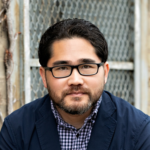
Sequoia Nagamatsu
RWW Faculty
Beyond Normal: New Ways to Think about Readership, Writing, and Workshop
There is no such thing as a universal reader or a “normal” reader. Terms like “commercial” and “mainstream,” “accessible,” and “literary” probably mean different things to all of us . . . there may be craft/style considerations in common that produce what some might call a “page turner” . . . but here, too, one reader’s page turner is another’s waste of time—a book you throw across the room or hide in the freezer like Joey Tribbiani in Friends for being too upsetting (albeit beautiful) . . . or maybe, in some cases, even just downright irresponsible and lacking of empathy.
When I begin teaching a workshop (especially hybrid workshops that also welcome the discussion of published work), I spend a great deal of time discussing what we think of such terms and how the publishing industry might use them all in service of recognizing who our own imagined audiences might be―you cannot and should not write to please everyone if such a thing is even possible. (See Goodreads reviews.) But this isn’t just about genre or labels. It is a question of how our lifetime of being surrounded by literary labels and categories has perpetuated systemic inequalities, the myth that a readership for a particular community does not exist. In a diversity self-audit for 2019–2021, Penguin Random House noted that nearly 75% of its authors were white (with around the same demographic for its staff). These numbers reflected an industry-wide trend found in several studies, including a 2019 study from Boston University citing over 80% of publishing professionals being straight and 89% being non-disabled. If you’re interested in similar trends in the lit mag space, especially concerning women and people of color, see VIDAweb.org.
In light of recent movements towards equity in publishing, my students and I review the 2020 #PublishingPaidMe conversations and essays like “Comping White” from the Los Angeles Review of Books to better understand the history that has informed all of our biases regarding what is considered the status quo in literature, what is saleable or not . . . and how all of this might be at odds with the stories we’ve always craved, wanted to tell, and rarely are seen in the spotlight. I want to stress that while I start with a conversation about the larger writing landscape and the publishing industry, I also emphasize that our conversations about student work are not about finished products . . . but that as writers and readers, we’ve spent a lifetime being informed about what storytelling is and should be by what we see on shelves. Matthew Salesses, in his wonderful book Craft in the Real World, takes some time to highlight the importance of thinking about intended/imagined audience but sees the exercises as being more of a spectrum―concentric circles versus an absolute. Tier one might be who you imagine first (your ideal reader); tier two might be a group of a thousand or couple thousand people who, for various reasons of background, geography, and community, will understand what you’re trying to do even if other aspects of a work may not align with their values or artistic tastes; tier three might be readers who may or may not see value in the work and may entirely misread or misinterpret it―but Salesses notes that writers shouldn’t be overly concerned with these folks. In a workshop environment, sometimes this might mean politely acknowledging feedback while knowing a person is not your reader. This does not mean you ignore that feedback, but such feedback can, in fact, illuminate your vision: who you aren’t as a writer and to what degree (if any) you want to welcome that third tier.
Taking time to talk about systemic racism and other inequities (and the related complex issue of audience) in publishing helps students to articulate their own identities, biases, and wants/needs as a writer. And these conversations can often help create a shared understanding within a classroom community about not only reading from your own position/experience, which is important, but also stopping to think about the probable intentions/imagined audience of a writer. In other words, a creative work is not a failure simply because you don’t happen to be the target audience. Your specific reading experience/history does not make your critique inherently superior. Instead, this disconnect can be a learning experience in reading (and editing) with a more empathetic eye—something that I’d like to think helps strengthen a writer’s own process when including communities that are not their own in their own work—also another topic of conversation. Depending on the group of students, I sometimes go as far as to spend part of a class period creating a shared community contract, giving students agency over the kind of experience they’d like to have and how we should treat each other’s work over the coming weeks.
Depending on the kind of workshop I’m teaching, some of these conversations and explorations are happening hand-in-hand with the discussion of published work—stories, complete novels, essays collections, interviews. I’ll also from time to time have writer friends Zoom in to talk about the role of workshopping in their own trajectory (particularly colleagues from marginalized communities), to discuss their own philosophies to solidify the work we’ve been doing, and to provide some credibility to the work we are about to embark on.
I do use a watered-down version of Liz Lerman’s Critical Response process, but I won’t belabor that at the moment since Barrie spoke of it. I do invite students to have a voice in what that process might look like for our particular community, after which we draw up a contract of shared process.
After the formal workshop is over (perhaps after a week’s time), I hold formal small group debriefs with the rest of the class about what everyone learned about their own processes and about craft, genre, about their editorial eye through workshopping a particular work. This reflection, I’ve found, is just as insightful for the class, as it transforms what they’ve articulated in their role as a critic to their role as a reader and writer in a more tangible way. In other words? Why did that discussion matter beyond a particular work? What can I learn based on how I did or did not read this? What has been revealed about my own identity as a writer? About my own biases? How can I do better? How can we do better as a community?
_
Sequoia Nagamatsu is the author of the national bestselling novel, How High We Go in the Dark (William Morrow, 2022), a New York Times Editors’ Choice, and the story collection, Where We Go When All We Were Is Gone (Black Lawrence Press, 2016), silver medal winner of the 2016 Foreword Reviews Indies Book of the Year Award. His work has appeared in publications such as Conjunctions, The Southern Review, ZYZZYVA, Tin House, Iowa Review, Lightspeed Magazine, and One World: A Global Anthology of Short Stories, and has been listed as notable in Best American Nonrequired Reading and the Best Horror of the Year. He currently teaches at St. Olaf College and resides in Minneapolis. He is at work on a forthcoming novel, Girl Zero.
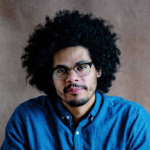
Geffrey Davis
RWW Faculty
Workshop Wannabe
1. A Story
In a car of chatty arts organization volunteers headed across the state of Arkansas, a young aspiring storyteller sitting beside me asked our driver, Kathy McGregor, for some beginner’s guidance.[1] Kathy, a nationally recognized storyteller with more than 30 years of experience performing at various festivals, said something like this:
This is a story: HAHA; AH-HA; AHHH; AMEN.
After being stunned by what immediately (if only impressionistically) seemed true to us, the car asked her to, you know, say more. And so she talked about how reading a room can sometimes tell a storyteller how far to move an audience along that psychic scale of story. If you have very little context or very little permission or very little time, you might only move a room to laughter (HAHA), or from laughter to recognition (AH-HA). If you have more overlap or more permission or more time, you might move that room from understanding or satisfaction (AHHH) to rapture (AMEN). She was also suggesting that pushing people further along that scale than they were prepared or willing to go is to risk losing if not hurting a room.
While preparing for this panel, I began wondering about a scale of psychic intensity as experienced by writers in the workshop setting. How many writers arrive wanting to approach their most rapturous relationship to their art? I tend to ground my approach to workshop with challenging pieces like Sean Thomas Daugherty’s poem addressing a writer friend who has stopped writing, called “Why Bother?”:
Because right now there is someone
out there with
a wound in the exact shape_________________________________ of your words.
But how many writers have I silenced by assuming all want to or would grow by approaching or knowing that intensity? Year after year, in conscious and unconscious ways, my relation to academia alters some, and I lose more and more experiential traction on how each new cohort of writers feels about the workshop’s ability to care for them through such intense artistic stakes. What quality of context or permission or time do workshops need to cultivate safe and ethical artistic growth? What new structures of care can the workshop allow or invent?
Because the MFA workshop is set within an institution, and because institutions have poor track records with caring for individuated personhoods, and because (despite my own resistances) I am an agent of the institution, I tend to open workshops by inviting writers to cultivate a healthy irreverence toward the endeavor and toward myself: Do NOT lay your voice at the feet of this institution, I beg them. You might not recognize what you need to say as you leave. I also warn them about the urge to conflate their achievement of admission with their validity and/or identity as an artist. If only because I want them to claim and honor a literary wondering and wandering that they started before and should continue after their workshop experience—but also because they need to know that a writer’s most liberatory developments may not necessarily happen in the workshop setting.
Amen?
2. A Home
Co-founded in 1996 as a remedy for the under-representation and isolation of Black poets in the literary landscape, Cave Canem has imagined itself into a “home” for Black poetry.[2] Through intensive summer writing retreats for Black poets, Cave Canem has been building and expanding (and sometimes renovating) a belonging where Black writers can cultivate their artistic and professional growth.
I became a member of that home in 2012, the summer after completing my own MFA program, and I can tell you with veritable certainty: there is a distinct before and after Cave Canem for me, not only to my sense of self as a writer but also to my approach as a teacher of writing. In no small part, that pedagogical development was the result of getting to experience several new and diversely stunning writers who each led workshops in their own distinct ways. (The math here is that I jumped from having experienced like six different workshop styles from just two institutions to over 20 different workshop styles from dozens of institutions). One major, if obvious, takeaway: the greater diversity of models for workshop that you are able to witness, the richer your pool of instincts and imagination for writing and workshop possibilities. This is one of the treasures of RWW’s residency and mentorship model.
But I have a conviction that I was especially moved and changed as a writer and a teacher by experiencing what happens when a literary institution chooses (without necessity) to commit itself to building the stakes and structures of home around artists.
In addition to the shared identifier of writer or artist (which can and does mean a distinct thing to each individual), it would be too easy (and maybe even dead ass wrong) to suggest that what Cave Canem cracked was how artists will thrive if you add just one more common identity denominator of Blackness (which also can and does mean a distinct thing to each individual). I would suggest that what it’s added is belonging. If only because in the MFA’s predominantly white space with all the cultural messaging and trappings that would seem to bend toward an assumption of their core values and institutional needs, I’ve witnessed countless white writers suffer from questions of belonging, from an absence of home.
If like me, however, you’ve ever witnessed the disruption or dismantling of a home—the veiling myth of its predetermined safety turned sour by economic instability and/or violence and/or changes in leadership—you know homes that go unmaintained can become dangerous for those who have built their belonging there. Can an MFA become and then stay a home? Can a workshop? Should it? My own line of questioning feels ripe for both doubt and inspiration, fatigue and hope. But I can’t shake what I witnessed through Cave Canem and experienced myself—the kind of personal fulfillment and artistic transformation that can occur within an institutional context that risks calling itself home—the communal possibility of such growth for all involved seems worth risking its failure.
__
Geffrey Davis is the author of Night Angler (BOA Editions, 2019), winner of the James Laughlin Award from the Academy of American Poets, and Revising the Storm (BOA Editions, 2014), winner of the A. Poulin, Jr. Poetry Prize. Named a finalist for the Hurston/Wright Legacy Award, Davis has received the Anne Halley Poetry Prize, the Dogwood Prize in Poetry, the Porter Fund Literary Prize, and the Wabash Prize for Poetry, as well as fellowships from Bread Loaf, Cave Canem, the National Endowment for the Arts, the Vermont Studio Center, and the Whiting Foundation for his involvement with The Prison Story Project. His poems have appeared in The Atlantic, New England Review, New York Times Magazine, The New Yorker, Oxford American, PBS NewsHour, Ploughshares, and elsewhere. Davis lives in the Ozarks and teaches with the University of Arkansas’s Program in Creative Writing and Translation. He also serves as Poetry Editor for Iron Horse Literary Review.

Jane Wong
Guest Faculty
Un-doing Iowa and Locating Joy
1.
I will never forget what one of my professors at Iowa said to me once during a workshop: “Your poem is like Ikea furniture: cheap and hard to put together.” How do you respond to that, as a young poet? As a young poet who was also a woman of color, who was also the child of immigrants, who was also a first-generation college graduate and grew up low-income? And, in a space where the workshop professor was seen as the authority figure, how could anyone respond to such an awful comment? I can still hear the echoing silence of that room in the Dey House, of trying to find a vessel for the anger that engulfed me.
I went to the Iowa Writers’ Workshop from 2008-2010 and, minus one or two visiting professors, was taught via the “Iowa Method.” I.e., hierarchical critique, the silent writer. The very-white reading list of “experimental” poets I was supposed to read. For two years, I didn’t have a speaker in my poem; how could I, when I was taught to not exist? I moved toward abstraction and elliptical distance, afraid I would be called “ethnic lit.” Because I was taught that “ethnic lit” was something to look down upon. Cathy Park Hong writes about this in “Delusions of Whiteness in the Avant Garde”:
“Here I must speak anecdotally, as it’s persistently turned up in conversation among friends and students, but some of us (and here I use the first person plural loosely) dread the possibility of being tarred as an ‘identity politics’ poet, and perhaps to such a degree that it’s turned into our own detriment: we may overly exercise a form of self-restraint, scraping our writing of explicitly toxic racial matter…”
Beyond the toxicity of the “Iowa Method,” which is fundamentally problematic when you consider the stakes of “silencing” poets of color in a classroom, so many of us were being taught that we should be embarrassed by anything too “ethnic,” too “sentimental,” too “confessional.”
I have complicated feelings about my time at Iowa, to say the least. What I will say, though, is that I did find community through small groups of fellow poets there―where we oftentimes questioned our workshop experiences. And I also knew what I needed after Iowa: a tender, safe, and encouraging community; I applied to Kundiman and went after Iowa. And that experience at Kundiman altered my entire sense of what workshop could be. It could be writing a few lines, sharing, and singing karaoke. Who knew?
2.
As a professor, I vowed to un-do my time at Iowa. I vowed to not just throw away the “Iowa Method” in my classroom/literary “kitchen” (where everyone hangs out!), but to imbue workshop with utmost joy. My poets sometimes ask: “does this line work?” or “does the ending land?” And I always tell them that I don’t want my poems to do labor for me. And poems aren’t flying a plane to get you from point A to point B. Instead of asking if something is “working,” I’m curious about where the heart is. Where is the beating heart of the poem? Where are the hearts, plural (akin to an octopus)? I ask these questions early on, as we listen to the poet read. That space where you feel that “oof” moment, that space where you have to pause and re-read it. The heat. The circulation. The arteries leading elsewhere. It can be a line. Or maybe it’s the shape of the poem. Or a single dash. Once we start talking about the heart, we can then start to talk about how to strengthen the heart. How to bring fresh blood to the organ.
A few other things: Usually, workshops ask for feedback letters from participants; while I do love letters, I also invite interdisciplinary ways to engage―voice memos, playlists, suggested viewing, a poem written in response. Of the latter option, I tend to intermingle creative prompts into workshop, inspired by the poem that is “up” for discussion. What can we learn from each other? And I always, always, write with my students during such in-class prompts. I am (and will always be) a practicing poet, capable of both failure and magic. And maybe failure = magic.
__
Jane Wong is the author of How to Not Be Afraid of Everything (Alice James Books, 2021) and Overpour (Action Books, 2016). Her poems and essays can be found in places such as Best American Nonrequired Reading 2019, Best American Poetry 2015, American Poetry Review, POETRY, AGNI, Virginia Quarterly Review, McSweeney's, and Ecotone. A Kundiman fellow, she is the recipient of a Pushcart Prize and fellowships and residencies from Harvard’s Woodberry Poetry Room, the U.S. Fulbright Program, Artist Trust, the Fine Arts Work Center, Bread Loaf, Hedgebrook, Willapa Bay, the Jentel Foundation, and the Mineral School. She is an Associate Professor of Creative Writing at Western Washington University. Her memoir, Meet Me Tonight in Atlantic City, is forthcoming in 2023 from Tin House.
